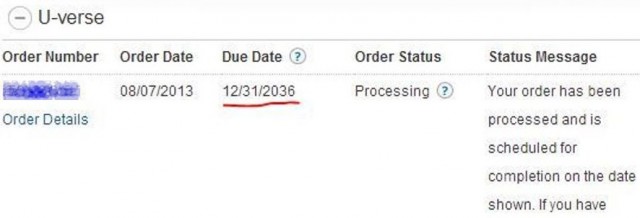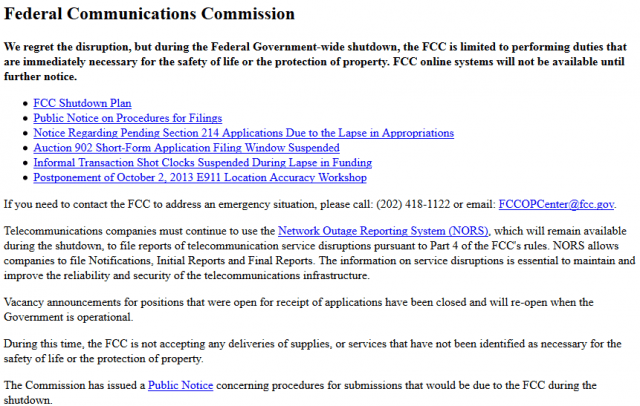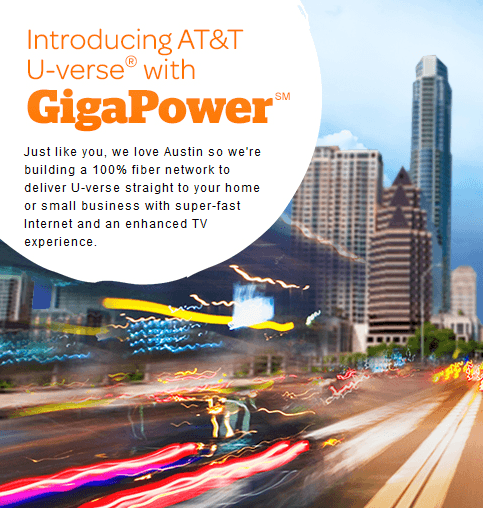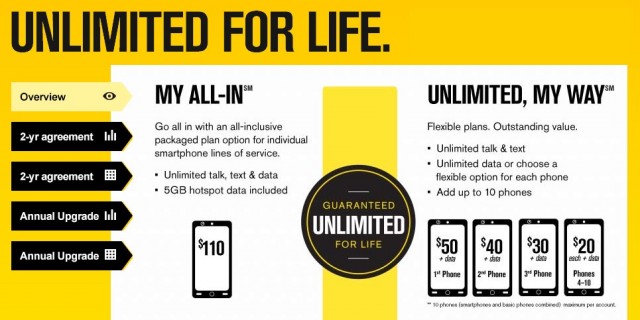 If you thought waiting three days for a service call was too long, you haven’t talked with Tod Robberson, editorial writer for the Dallas Morning News. AT&T has scheduled his U-verse installation 23 years from now.
If you thought waiting three days for a service call was too long, you haven’t talked with Tod Robberson, editorial writer for the Dallas Morning News. AT&T has scheduled his U-verse installation 23 years from now.
Robberson has been buried in AT&T promotional mailings pushing its U-verse fiber to the neighborhood service he was ready to sign up for two years ago, but wasn’t yet available in his neighborhood. Dozens of mailings arriving this summer indicated that finally changed and he was ready to see the back of Time Warner Cable:
I phoned one day after receiving my first notice. I signed up immediately for service. The friendly sales person told me because of high demand, she couldn’t set an installation date for sooner than two weeks. Whatever. Fine. We agreed on August 19, somewhere between 9 and 11 a.m. I couldn’t wait.
Then, on August 16, they called with bad news. They needed to delay the installation for another week. Big disappointment, but I could live with it, I thought.
A week later, they called again and said there was another delay. The lines in my area needed “conditioning.” Each week since then, I’ve received a call from an AT&T person telling me about the conditioning problem. I finally offered to get out my own bottle of conditioner and do it myself. They didn’t get the joke.
Finally, today, I escalated. I talked to Gilbert in Complaints. Gilbert the Problem Solver. He heard me out. I told Gilbert that AT&T had me at hello. I was just dying to get U-verse and was very frustrated that no one at AT&T would listen. I could swear he even giggled a little when I made the “bottle of conditioner” joke. Then he did some checking around and told me that, well, truth be told, I could be waiting another year before they got around to installing my service. That’s right, one year.
Turns out that Gilbert was optimistic. I went online today with AT&T just to make sure I didn’t misread the notice I got from AT&T. Did they really tell me that service was now available? Well, I couldn’t have signed up if it wasn’t. AT&T’s system is set up to block you if your neighborhood isn’t ready.
But now, the “due date” on my installation has changed. It reads: 12/31/2036.
Dallas is home to the headquarters of AT&T and was an early adopter of U-verse. But AT&T has won the right under state law to decide when and where it chooses to deploy the service, leaving a large number of Dallas residents waiting since its introduction in 2010.
For the foreseeable future, Robberson’s tree-infested, satellite-unfriendly neighborhood is stuck with one choice for pay television and broadband: Time Warner Cable.


 Subscribe
Subscribe

 The melodramatic response to the impasse in Washington was not repeated by most other federal agencies.
The melodramatic response to the impasse in Washington was not repeated by most other federal agencies.

 A
A  Verizon Wireless discontinued offering unlimited use data plans, but has allowed customers still on those plans to keep them indefinitely. Last year, Verizon Wireless amended its policy for grandfathered unlimited customers denying them access to subsidized, discounted devices unless they switched to a usage-based plan. A website error allowed unlimited customers to bypass a usual restriction requiring them to abandon their unlimited plan to complete the upgrade order. Dozens of customers reported this morning they had received their new phones with unlimited data still intact. With the glitch fixed, customers attempting to upgrade will once again need to give up unlimited data in return for a device discount.
Verizon Wireless discontinued offering unlimited use data plans, but has allowed customers still on those plans to keep them indefinitely. Last year, Verizon Wireless amended its policy for grandfathered unlimited customers denying them access to subsidized, discounted devices unless they switched to a usage-based plan. A website error allowed unlimited customers to bypass a usual restriction requiring them to abandon their unlimited plan to complete the upgrade order. Dozens of customers reported this morning they had received their new phones with unlimited data still intact. With the glitch fixed, customers attempting to upgrade will once again need to give up unlimited data in return for a device discount. At least one Wall Street analyst agreed with Sprint.
At least one Wall Street analyst agreed with Sprint. If “follow the money” is a maxim in business, then it should come as no surprise Verizon favors the making the bulk of its investments and expansion in its enormously profitable wireless business.
If “follow the money” is a maxim in business, then it should come as no surprise Verizon favors the making the bulk of its investments and expansion in its enormously profitable wireless business.